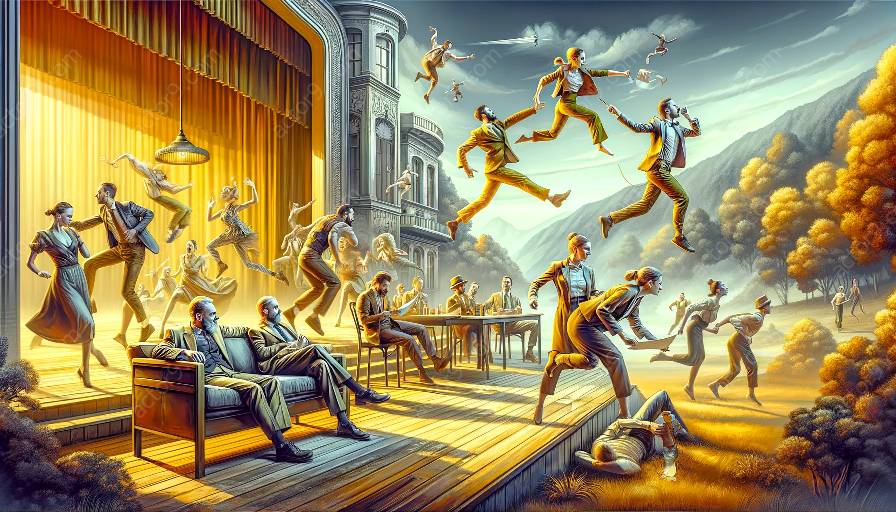Physical theatre and comedy, when combined, create a dynamic and engaging form of performance that is capable of breaking down barriers and transcending cultural and linguistic boundaries. In this article, we will delve into the ways in which physical theatre can contribute to breaking down barriers in comedy, particularly through its comedic aspects, and explore how this unique art form has the power to connect, entertain, and enlighten audiences.
Understanding Physical Theatre
Physical theatre is a performance style that emphasizes the use of the body as a primary means of expression. It often involves a powerful combination of movement, gesture, and non-verbal communication to convey a narrative or concept. By focusing on the physicality of performance, physical theatre offers a universal language that can be understood by diverse audiences, regardless of cultural or linguistic differences.
One of the key aspects of physical theatre is its ability to transcend traditional forms of communication by relying on the body's expressive capabilities. Through the use of mime, gesture, and movement, physical theatre artists can convey emotions, narratives, and ideas in a manner that is both captivating and universally accessible.
Exploring the Comedic Aspects of Physical Theatre
Comedy has long been an integral part of theatrical performances, and when paired with physical theatre, it takes on a unique and compelling form. The comedic aspects of physical theatre often revolve around exaggerated gestures, expressive movements, and innovative use of space, creating an immersive and entertaining experience for audiences.
Physical comedy, a hallmark of physical theatre, relies on the performer's physicality to elicit laughter and amusement. Slapstick humor, clowning, and mime are just a few examples of comedic elements that are seamlessly integrated into physical theatre, adding depth and humor to the performance.
Contribution to Breaking Down Barriers
The combination of physical theatre and comedy contributes significantly to breaking down barriers, both within the context of performance and in society at large. By embracing a non-verbal and visually engaging form of storytelling, physical theatre transcends linguistic barriers, allowing audiences from diverse cultural backgrounds to connect and resonate with the performance on a profound level.
Furthermore, the comedic aspects of physical theatre have a universal appeal, eliciting laughter and joy that transcends cultural and social divides. Through humor and physicality, performers can create a shared experience that unites audiences, regardless of their individual backgrounds.
Engaging and Enlightening Audiences
Physical theatre's unique ability to merge comedy with non-verbal storytelling not only entertains but also enlightens audiences. By challenging conventional norms and expectations, physical theatre encourages viewers to perceive and interpret performance in a refreshing and inclusive manner, fostering a sense of community and understanding.
As audiences become immersed in the comedic aspects of physical theatre, they are given the opportunity to engage with the performance on an emotional and intellectual level, prompting introspection and empathy. This transformative experience fosters empathy and understanding, promoting unity and breaking down societal barriers.
Conclusion
Physical theatre's incorporation of comedic elements contributes significantly to breaking down barriers in comedy, offering a platform for diverse audiences to connect, laugh, and empathize on a universal scale. By embracing non-verbal communication, physicality, and humor, physical theatre transcends cultural and linguistic differences, fostering a shared experience and promoting inclusivity.
In essence, the intersection of physical theatre and comedy presents a compelling and enriching form of performance that has the power to entertain, engage, and bridge divides, ultimately contributing to a more inclusive and interconnected society.




































